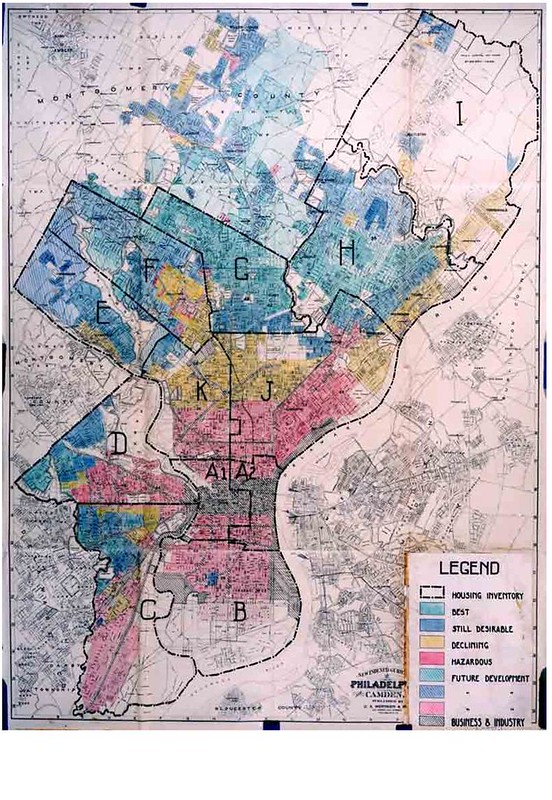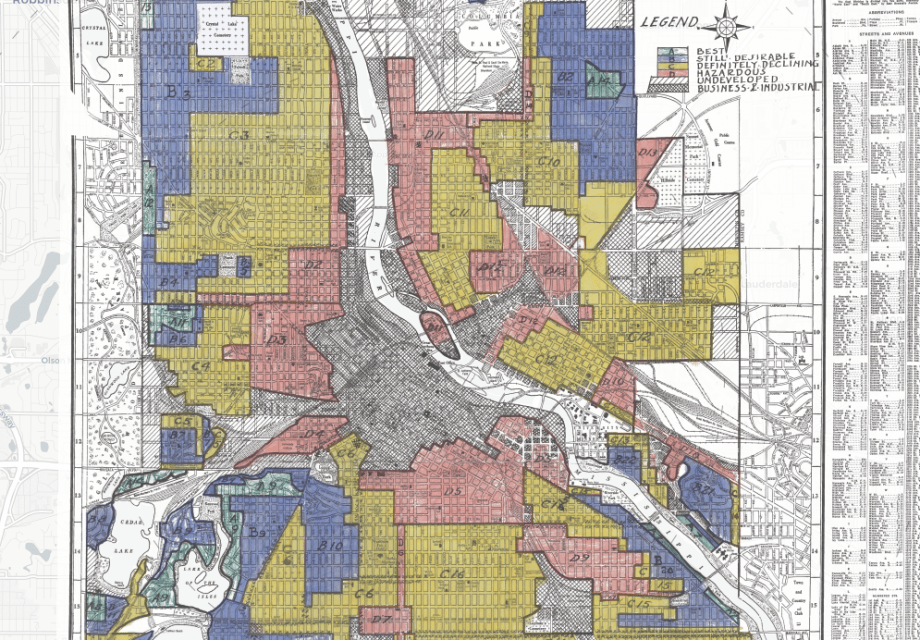Communities that were red-lined in the 1930s are still experiencing more than twice the rate of pedestrian deaths today than more privileged neighborhoods — and we can't achieve Vision Zero until we reckon with racist and classist policies that contribute to the disparity, a groundbreaking new study argues.
In the first study ever to definitively "connect redlining to a transportation-related health outcome," researchers found that census tracts once marked as "hazardous" or "grade D" by the Home Owners' Loan Corporation experienced a pedestrian death rate of 2.6 per 100,000 people between 2010 and 2019, compared to a rate of just 1.1 during the same period for tracts marked grade "A" or "best."

Under Roosevelt's New Deal, the infamous Home Owners' Loan Corporation maps were used to determine eligibility for low, federally backed interest rates based on a color-coded grading system that systematically marked Black and low-income communities with red lines to connote "D" grade neighborhoods that were supposedly too risky for banks to invest in — essentially "tying the presence of Black people to low property values," the researchers wrote.
Predominantly White and wealthy communities, meanwhile, generally received "A" grades that guaranteed them the lowest rates around, and were handed a profound incentive to make sure their neighborhoods stayed segregated by any means necessary lest they slip into a lower category.
The researchers stress that this simple and deeply racist policy helped "cement the racial wealth gap" that endures to this day, and remains associated with a cascade of unjust and deadly intergenerational impacts that have endured as well. In many communities, both the present-day residents of red-lined neighborhoods and the descendants of people who lived in them but were later displaced are still experiencing higher rates of infant and maternal mortality, gun violence, and poverty, to name just a few of a mountain of adverse health and economic outcomes.
Pedestrian deaths can now be added to the list.
"In public health, there has been a shift towards thinking more about societal processes that impact the inequities we see in the U.S.," said Nandi Taylor, a PhD candidate in public health at University of North Carolina at Chapel Hill and the lead author of the study. "When we think about pedestrian fatalities, the current transportation field is largely focusing on the identification of individual risk factors rather than these policies that created and facilitated unsafe environments. ... We think that needs to change."
Those "individual risk factors," of course, will be all too familiar to sustainable transportation advocates, even if they don't know the historical reasons why just so many of them are present in Black and brown communities.
In addition to plunging existing Black homeowners into poverty, red-lining transformed neighborhoods of color into targets for "slum clearance" programs to make way for the interstate highway system, leaving the residents who remained to contend with both the freeways themselves and a deadly maze of supporting arterials that are today the site of the majority of pedestrian and cyclist deaths.
Meanwhile, the absence of affordable mortgage products caused vacancies to skyrocket, leaving sidewalks, which cities usually rely on homeowners to maintain, to crumble in front of empty buildings. Financially struggling households became more dependent on less-expensive modes like walking, biking and transit, even when a simple walk to the bus stop meant endangering their lives.
And disempowered residents had little political power to resist these policies or call for public investment in infrastructure like good crosswalks and street lighting, and were systematically shut out of government leadership positions that had the most direct impact on the roads they walked on.

To be clear, this is just a partial list of the many transportation impacts of red-lining — which Taylor emphasized itself "isn’t a sole or perfect measure of structural racism" that can perfectly explain why Black people are so much more likely to die on foot or bike in the U.S., despite the fact that they actually walk and cycle fewer miles than their White counterparts.
To truly accomplish the goal of Vision Zero, Taylor and her co-authors argue that transportation leaders need to move beyond "color-blind" approaches — such as allocating funding for pedestrian safety equally across a community — and start reckoning with the upstream reasons why U.S. roads are so dangerous for people of color in the first place. And that will mean not just learning their history, but stepping outside of siloed agencies to develop multidisciplinary approaches that go beyond painting crosswalks.
"We're imagining some kind of initiative that takes into account the history and a wider diversity data sources, to really get at why we see the inequities we see in transportation that we see today," Taylor adds. "We need to be more direct in addressing these underlying drivers, and not just advocate for equal investment everywhere."






